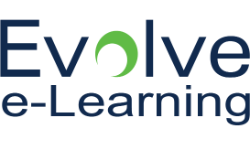
How Training Can Improve Needlestick Injury Prevention in the Healthcare Sector
Needlestick injury in a health setting continues to pose a high level of occupational exposure to blood-borne pathogens for healthcare workers and patients. A needlestick prevention training that effectively equips personnel with proper knowledge and capabilities concerning needle injuries, thus sustaining and managing such associated hazards or occupational complications.
E-learning offers a flexible, accessible, and engaging solution to improve training programs and make them more effective and convenient for busy healthcare professionals.
Limitations of Traditional Training Methods
Traditional in-person training methods can be pretty challenging in healthcare. With busy schedules, erratic shifts, and frequent turnover, it could be not easy to ensure that all health professionals get the same quality and depth of training. Besides, in-person training can take time, drawing workers away from crucial work. E-learning eliminates these hurdles by offering convenience and flexibility.
Healthcare professionals can access training when it works within their busy schedules, ensuring fuller participation and a better retention rate of important safety information.
E-Learning and the Prevention of Needlestick Injuries
E-learning platforms can offer an integrated solution to enhance needlestick injury prevention training. With online courses that comprise interactive modules, real-life simulations, and video demonstrations, the learners are engaged dynamically and effectively.
Scenarios such as how needles should be correctly disposed of or what immediate steps should be taken when an injury has occurred accidentally can be shown to health professionals. This engaging, hands-on learning helps drive home the key lessons, and the workers will find it so much easier to apply that knowledge in a real-life scenario.
Interactive Learning for Greater Retention
One of the significant advantages of e-learning is the interactivity of the training. Unlike traditional lectures, e-learning courses involve the learner in quizzes, simulations, and decision-making exercises to drive the points home. These interactive elements not only increase engagement but also help solidify safety procedures.
Flexibility and Accessibility to Healthcare Workers
The problem with health professionals is that they have very erratic schedules, often heavy, making it almost impossible for them to go for training. E-learning offers flexibility in training; it’s easily accessible at any time and anywhere. With a mobile, tablet, or computer, they can do their training according to their time and not affect their working or personal time.
Tracking Progress and Ensuring Compliance
Most of these e-learning platforms have tracking capabilities for supervisors to assess the progress of their team members. This way, supervisors will be guaranteed that all their employees complete their necessary training and follow the safety code.
Supervisors will be able to track completion rates, evaluate individuals’ performance, and flag areas where more training may be necessary. Besides, most platforms provide certification upon completion as proof that your employees have met the required safety standards.
Conclusion
E-learning offers an efficient and easy solution for bettering needlestick injury prevention training in healthcare environments. The approach guarantees that healthcare organizations ensure their personnel are ready to prevent needlestick injuries and maintain a safe working environment through flexible, interactive, and accessible learning. In such a manner, training would be more engaging, and workers are more likely to retain and apply what they have learned.
Explore courses that have generative AI incorporated in them, available from Evolve e-Learning Solutions, and allow your team to receive the training they need on their own time and have practical tools to keep everyone safe.
Share this article
Follow us
A quick overview of the topics covered in this article.
Latest articles
December 5, 2025
December 5, 2025
December 5, 2025




